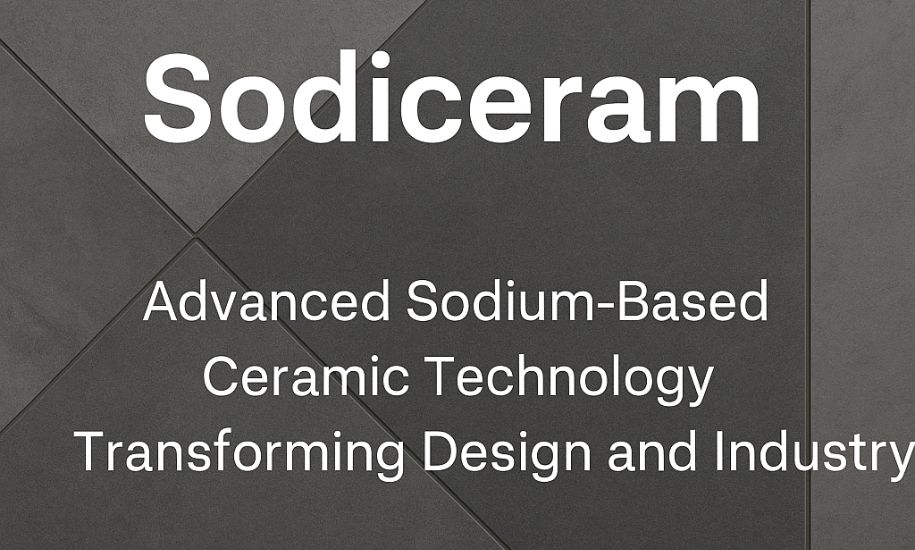Sodiceram: Advanced Sodium-Based Ceramic Technology Transforming Design and Industry
Ceramics have been part of human civilization for thousands of years—from the earliest pottery to the most advanced aerospace tiles. Yet, innovation in the ceramic industry has entered an entirely new era with the development of Sodiceram. This cutting-edge material combines traditional ceramic craftsmanship with modern materials science to produce sodium-enriched ceramics offering unparalleled durability, chemical resistance, and aesthetic versatility.
One of the most notable hubs for Sodiceram development and distribution is Sodiceram Reims, a center of ceramic excellence in France that blends artistry and engineering in ways that redefine the boundaries of design and performance.
What is Sodiceram?
Sodiceram is an advanced ceramic formulation that integrates sodium compounds into the ceramic matrix during production. This sodium-enriched composition modifies the microstructure, creating a denser, less porous, and more mechanically resilient material than traditional ceramics like porcelain or earthenware.
The result?
A ceramic product that:
- Resists extreme temperatures.
- Maintains structural stability under high stress.
- Stands up to harsh chemicals.
- Provides a sleek, refined aesthetic for architecture and product design.
The Science Behind Sodiceram
Sodiceram’s unique qualities are the result of material engineering at the microscopic level.
a) Sodium-Enriched Matrix
Sodium compounds influence crystal growth during kiln firing, producing a tightly packed structure that improves strength and reduces porosity.
b) Thermal Stability
Thanks to its composition, Sodiceram can handle sudden changes in temperature—ideal for environments that undergo thermal shock.
c) Enhanced Chemical Resistance
Unlike traditional ceramics, Sodiceram withstands exposure to acids, alkalis, and cleaning agents without degradation, making it ideal for laboratory, industrial, and kitchen applications.
d) Low Water Absorption
With absorption rates often below 0.5%, it rivals high-quality porcelain, making it suitable for damp or outdoor environments.
Sodiceram Reims: A Hub of Ceramic Innovation
When people refer to Sodiceram Reims, they often mean the French manufacturing and design hub where innovative ceramic solutions are produced and distributed. Reims has a strong history of artisanal craftsmanship and industrial design, making it the perfect location for pioneering ceramic advancements.
Key aspects of Sodiceram Reims:
- Design Expertise: Combines French aesthetic traditions with modern technical requirements.
- Custom Projects: Creates tailored ceramic designs for architectural projects, from luxury hotels to public spaces.
- Material Testing: Houses R&D facilities that test performance under mechanical, chemical, and thermal stress.
- Sustainability Practices: Focuses on eco-friendly manufacturing with reduced energy consumption.
Core Properties of Sodiceram
The appeal of Sodiceram lies in its multi-dimensional advantages:
| Property | Description |
|---|---|
| Strength | High compressive and tensile strength, resisting breakage. |
| Thermal Resistance | Operates effectively across extreme temperature ranges. |
| Chemical Stability | Maintains integrity even when exposed to corrosive substances. |
| Low Porosity | Minimal water absorption prevents cracking and mold growth. |
| Aesthetic Flexibility | Available in various finishes, colors, and textures. |
Applications of Sodiceram
a) Architecture & Interior Design
Sodiceram is popular for:
- Wall cladding in high-traffic public spaces.
- Luxury flooring in hotels, malls, and corporate buildings.
- Facades for residential and commercial projects.
b) Industrial Applications
In industry, Sodiceram is ideal for:
- Chemical laboratories – Non-reactive and easy to clean.
- Food processing facilities – Hygienic and resistant to cleaning chemicals.
- Thermal insulation in high-heat environments.
c) Artistic and Decorative Installations
Artists use Sodiceram to create:
- Sculptural installations.
- Designer wall panels.
- High-end decorative elements.
How Sodiceram Compares to Traditional Ceramics
| Feature | Sodiceram | Traditional Ceramics |
|---|---|---|
| Strength | Very High | Moderate |
| Chemical Resistance | Excellent | Moderate |
| Thermal Stability | Exceptional | Good |
| Water Absorption | <0.5% | Higher |
| Aesthetic Variety | Extensive | Limited |
Benefits of Using Sodiceram
1. Longevity
The durability of Sodiceram means fewer replacements and lower lifecycle costs.
2. Sustainability
Long life, recyclability, and eco-conscious production make it a sustainable choice.
3. Versatility
Can be used in minimalist modern spaces or ornate historical restorations.
4. Hygiene
Non-porous surfaces prevent bacterial growth, making it ideal for kitchens and hospitals.
Sustainability and Environmental Impact
Sodiceram manufacturers—especially in Sodiceram Reims—are committed to eco-responsible practices:
- Energy-efficient kilns reduce carbon footprint.
- Water recycling systems lower resource consumption.
- Locally sourced raw materials cut transportation emissions.
Challenges & Considerations
Despite its advantages, Sodiceram has some considerations:
- Higher Upfront Cost: More expensive than standard ceramics.
- Limited Global Availability: Not all regions have easy access to high-quality Sodiceram.
- Specialized Installation: May require experienced installers to maximize performance benefits.
Future of Sodiceram
The future of Sodiceram looks promising, with trends including:
- Smart Ceramics: Integrating sensors for temperature or stress monitoring.
- Advanced Coatings: Adding antibacterial or self-cleaning properties.
- 3D Printing Integration: Allowing custom shapes for architecture and product design.
- Expanded Global Market: Broader distribution networks beyond Europe.
Why Sodiceram Reims Stands Out
While Sodiceram is produced and used in various places worldwide, Reims stands out for:
- Innovation Leadership in sodium-enriched ceramics.
- Integration of Art and Science for both decorative and functional ceramics.
- Commitment to Sustainability and eco-conscious manufacturing.
For architects, industrial designers, and even homeowners, partnering with a Sodiceram Reims supplier means gaining access to cutting-edge ceramic materials with both technical and visual excellence.
Conclusion
From durability and design versatility to chemical resistance and sustainability, Sodiceram represents a major advancement in ceramic technology. Whether used for architectural elegance, industrial safety, or creative artistry, its sodium-enriched composition offers performance that traditional ceramics can’t match.
The innovation found in Sodiceram Reims demonstrates how a blend of artisanal tradition and scientific precision can reshape an industry. As demand grows for materials that are both high-performing and eco-responsible, Sodiceram is poised to become a go-to choice for builders, designers, and manufacturers worldwide.
For more in-depth features on innovative materials and design trends, follow The Mating Press—your trusted source for insight into the evolving world of modern industry and architecture.
